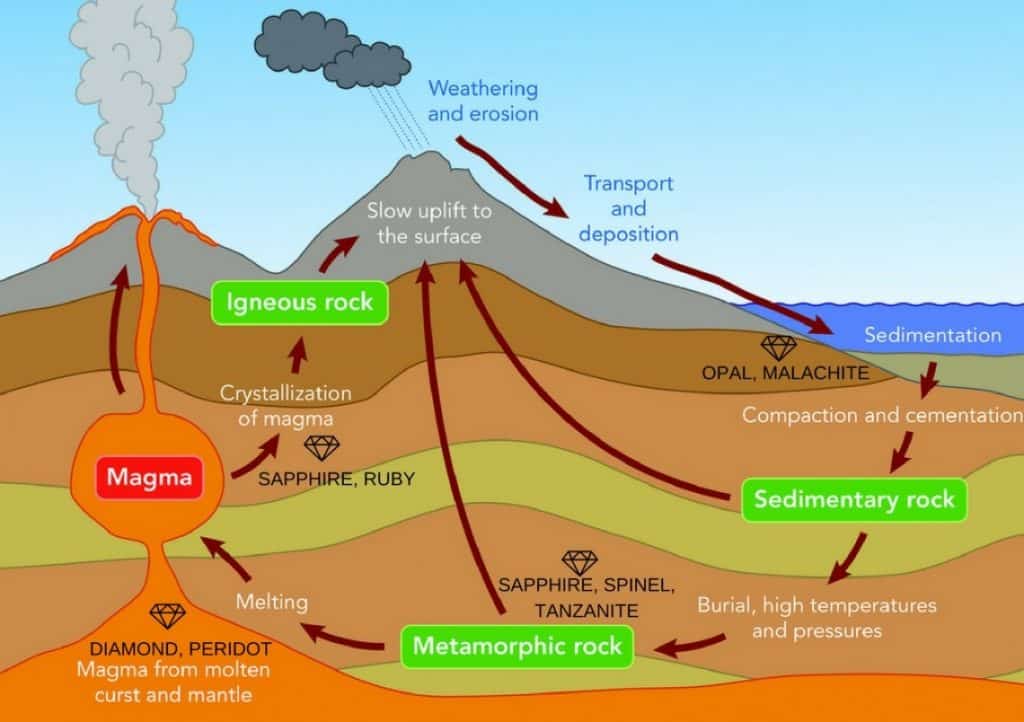Section 2: Mineral Formation and Resources
Minerals are usually formed through crystallization, which is the process that occurs when particles dissolved in a liquid solidify in an orderly, repeating pattern and form crystals. Geologists can use these minerals’ physical and chemical properties to determine the type of environment in which they formed. A geode is a rounded, hollow rock often lined with mineral crystals.

Minerals can form in two different ways. First is the crystallization of magma and lava. Crystallization occurs when minerals that form as hot magma cool inside the crust or as lava hardens on the surface. When these liquids cool to a solid state, they form crystals. Minerals can also develop when the crystallization of materials dissolves in water. When elements and compounds that are dissolved in water leave a solution (a mixture in which one substance is dissolved in another), crystallization occurs. Some minerals form when solutions evaporate. Pure metals that crystallize from hot water solutions underground often form veins. Veins are narrow channels or slab material different from the surrounding rock.
Minerals are the source of gemstones, metals, and various materials used to make many products. Gemstones are minerals that occur in nature. They are hard, colorful, and have a brilliant or glassy luster. Once a gemstone is cut and polished, it’s called a gem. Minerals are the source of some metals, such as aluminum, iron, copper, or silver. Ore is a rock that contains a metal or other valuable minerals that can be mined and sold at a profit.
To produce metal from a mineral, rocks containing minerals must be located through prospecting. Ore deposits are removed from the ground through mining, and stone is then processed by smelting to produce metals.
Review:
- Explain crystallization.
- What are the two different ways that minerals can form?
- What are gemstones?
